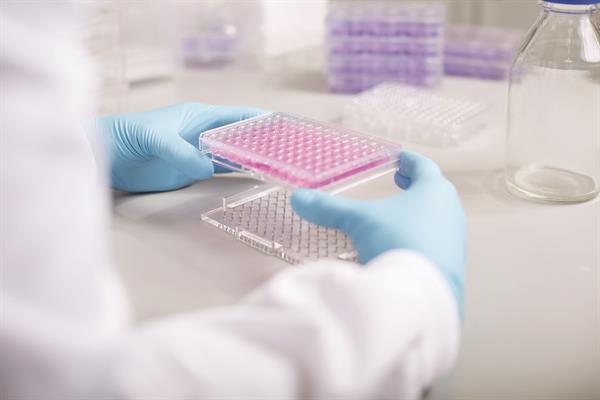February 21, 2020 -- Traditional high-throughput drug screening in oncology routinely relies on 2D cell models, which inadequately recapitulate the physiologic context of cancer. With recent technological advancements, a novel method for magnetic 3D cell culture can create pancreatic tumor models. This model may have serious effects on cancer research.
Leaving 2D in the past
Utilizing 2D cell culture for high-throughput screening for potential cancer therapeutics can hinder research outcomes, as 2D models are not able to fully recreate the behavior and functionality of 3D cell interactions. 3D ex vivo tumor models enable better recapitulation of in vivo biology features, such as cell-cell interactions, cell-matrix interactions, hypoxia, heterogeneity of tumor, drug penetration, and drug resistance, for putative in vivo characterization.
Establishing more predictive cancer models for evaluation of current and future chemotherapeutics is of high priority, and the creation of 3D culture systems that employ patient-derived tumors for rapid testing in a high-density format would constitute an important achievement toward precision medicine and regenerative therapies.
Magnetic 3D culture
Magnetic 3D methodology utilizes magnetization of cells with biocompatible NanoShuttle-PL, a cell-repellent plate and magnetic platforms to create spheroids, either by levitation or bioprinting, for structurally and biologically representative 3D models.
A variety of cell lines can be used in this model, including human colorectal adenocarcinoma cell line HT-29 (ATCC no. HTB-38) and human pancreatic epithelial carcinoma cell line PANC-1 (ATCC no. CRL-1469). The methodology includes an initial 3D cell viability assay that is screened in a 384-well format prior to further miniaturization into a 1536-well.
A new 3D cell culture method has been developed and validated using m3D bioprinting technology for HTS therapeutic screening with primary cancer cells to advance the discovery of appropriate clinical chemotherapeutics.

From the pilot screen of the approved drug library, multiple compounds demonstrated similar strong cytotoxic effects across all four of the cells derived from patients with pancreatic cancer to include proteasome inhibitors bortezomib and carfilzomib, histone deacetylase inhibitor romidepsin, and protein synthesis inhibitor homoharringtonine. Furthermore, in this test scenario, several of the panel drugs were definitively cell line specific, notably cancer associated fibroblasts (CAF)-selective statins and cardiac glycosides, as well as pancreatic cancer cell-selective trametinib and disulfiram.
As anticipated, most of the tested drugs were less active in 3D. However, a few drugs displayed preferential cytotoxicity against 3D models over 2D cultures, which proved to be both cell and drug dependent. The preference of disulfiram to hit 3D over 2D models, along with its addition to the clinical studies in metastatic pancreatic cancer, prostate cancer, and glioblastoma, give credence that a more phenotypically relevant strategy could translate into the development of precision medication initiatives for cancer research.
This screening approach demonstrated robustness as well as the ability to rapidly identify potential therapeutic drugs against pancreatic cancer. Specific drugs identified within the study may be considered early leads, as their well-known human pharmacology should be amenable for rapid translation to clinical studies.
Future efforts will be focused on the screening of larger chemical libraries (approximately 150,000) in a 1536-well automated platform to explore 3D pancreatic cancer and CAF coculture models for better prediction of the drug treatment response of patients with pancreatic cancer.
To learn more about magnetic 3D cell culture, please visit Greiner Bio-One.
Glauco Souza, PhD, is the director of global business development and innovation at Greiner Bio-One. Mackenzie Farone-Waite is the senior manager of corporate communications at Greiner Bio-One.
The article was reviewed by Jan Seldin, senior product manager of microplates, separations, cryopreservation, and biobanking at Greiner Bio-One.
The comments and observations expressed herein do not necessarily reflect the opinions of The Science Advisory Board, nor should they be construed as an endorsement or admonishment of any particular idea, vendor, or organization.
Do you have a unique perspective on your research related to drug discovery and pharmaceutical engineering? Contact the editor today to learn more.
Copyright © 2020 scienceboard.net






